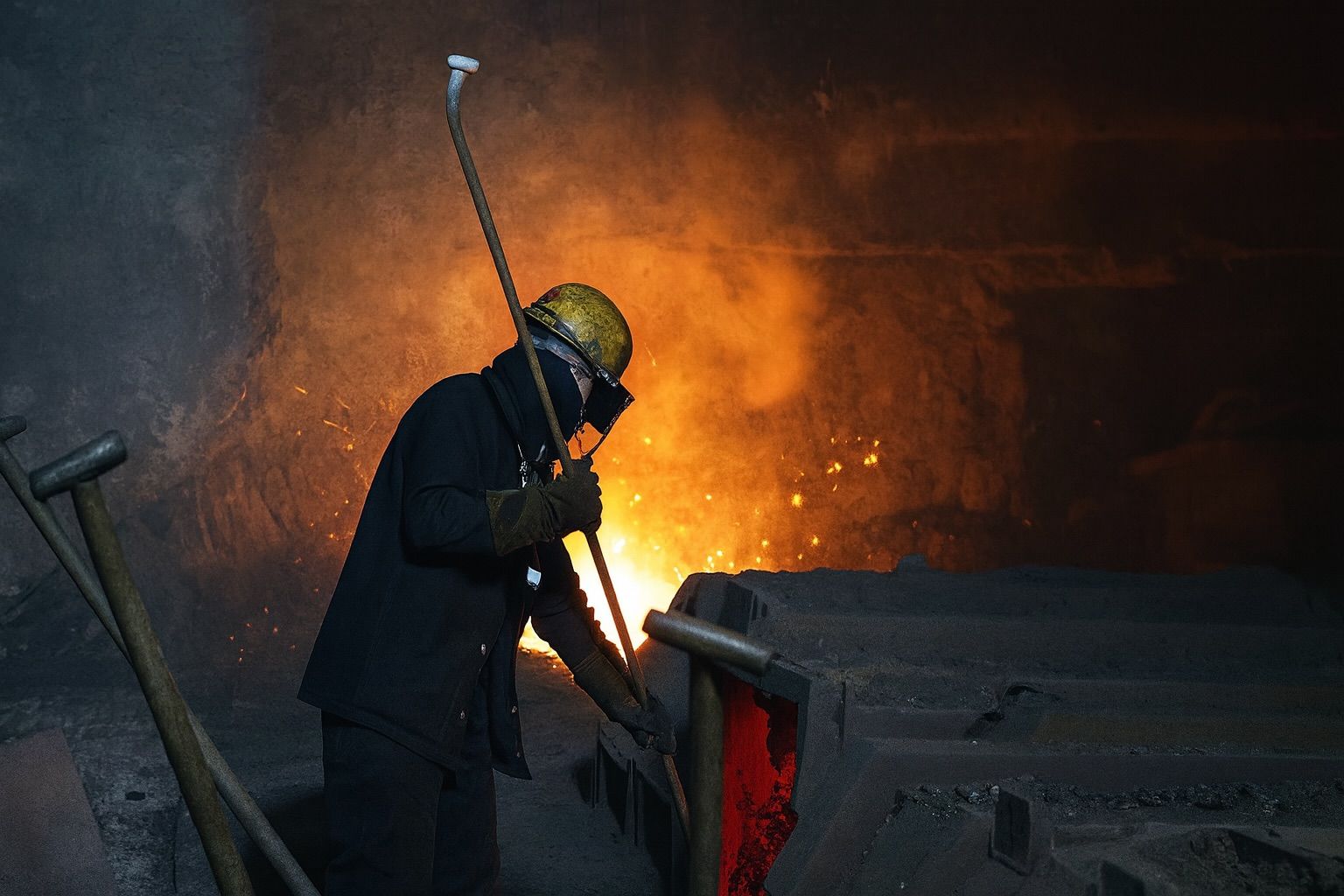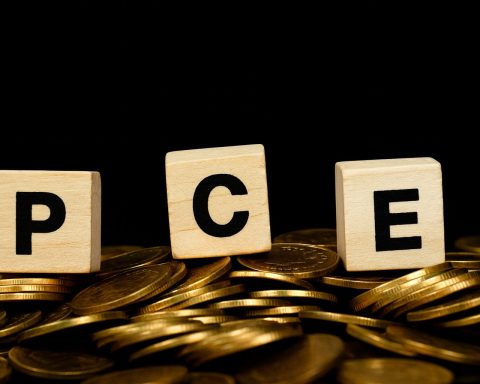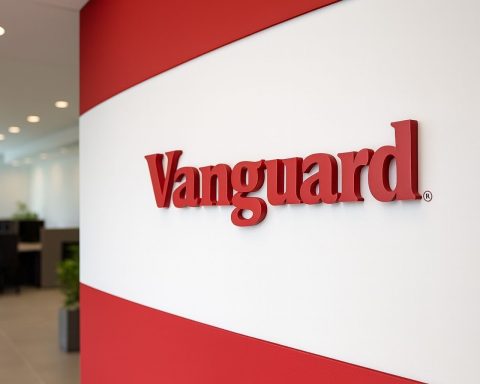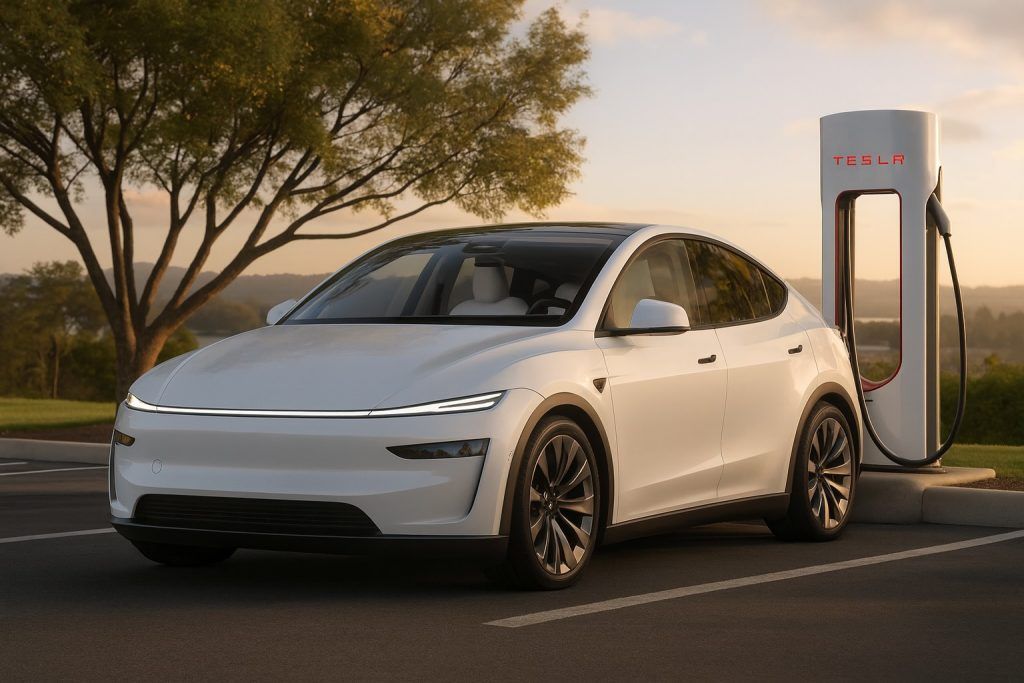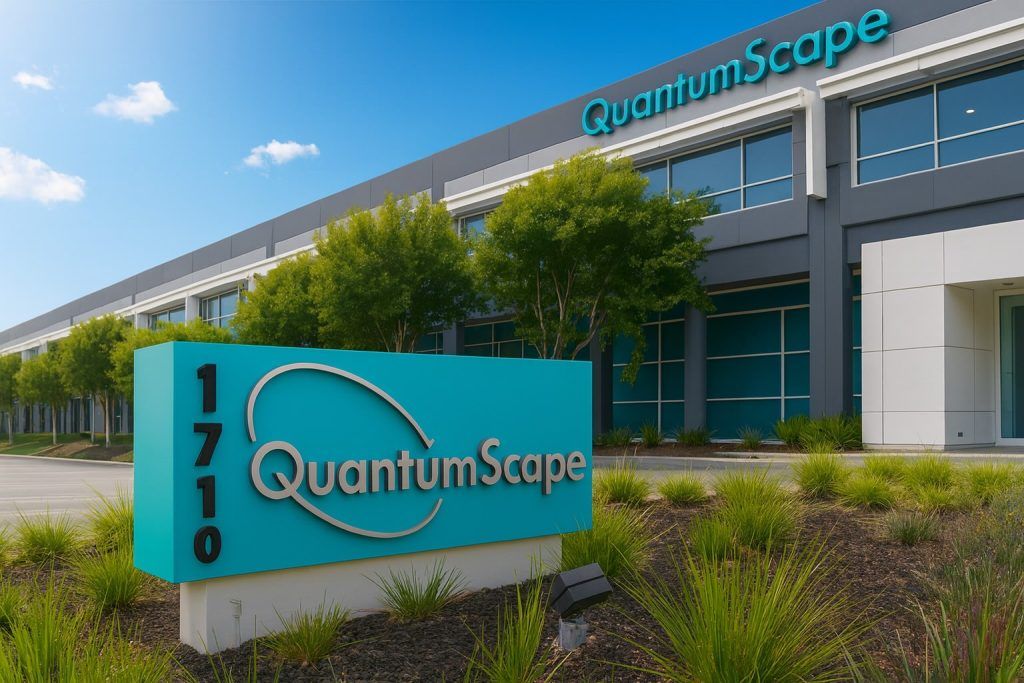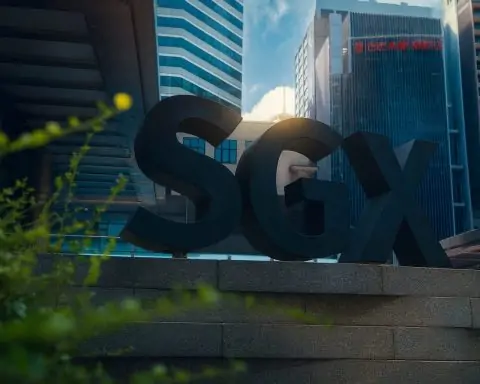- EU Doubles Down on Steel Tariffs: Brussels unveiled plans to double import duties on steel to 50%, matching Trump-era tariffs, in a bid to shield Europe’s ailing steel sector [1]. The move was immediately condemned as an “existential threat” to the UK steel industry [2].
- UK Steel Faces “Biggest Ever Crisis”: Around 78–80% of British steel exports go to the EU [3] [4]. Industry leaders warn the new tariffs and slashed quotas could “wipe out” UK steelmakers, calling it “perhaps the biggest crisis the UK steel industry has ever faced” [5]. Thousands of jobs among the UK’s 37,000 steelworkers hang in the balance [6].
- Brussels Targets Cheap Imports, Cites China: The European Commission plans to halve its tariff-free steel import quotas (down to ~18.3 million tonnes a year) and slap a 50% duty on any excess [7] [8]. Officials say this is vital to stop “millions of tonnes” of cheap foreign steel (especially from China) from flooding Europe [9]. The EU’s industry chief argued Europe’s steel was “on the verge of collapse” and must be protected so it can “invest, decarbonise, and become competitive” again [10].
- UK Scrambles for Exemptions: UK Prime Minister Keir Starmer insists his government is in urgent talks with Brussels (and Washington) to shield UK steel from the tariff hike [11] [12]. Britain is pressing for country-specific quota exemptions or other relief [13], after Welsh officials called the EU plan “concerning” and unions warned it could “kill off the industry” without safeguards [14] [15].
- Fears of Diverted Steel “Flood”: UK Steel’s director Gareth Stace cautions that if Britain isn’t exempt, steel barred from the EU will surge into the UK market, which “could be terminal for many of our remaining steel companies” [16]. He urged London to “put in place its own measures” (like import quotas) to defend against a post-tariff import glut [17]. Trade unions echoed that a transatlantic “trade war” in steel would hurt workers on all sides [18].
- European Steel Stocks Soar: The tariff news sent European steelmaker shares jumping 3–5% in anticipation of a more protected market [19]. ArcelorMittal, Thyssenkrupp, SSAB and others all surged ~3% on Oct 8 [20]. The pan-European STOXX 600 index hit a record high (up 0.5% to ~572 points) with steelmakers and banks leading gains [21]. Analysts noted investors had largely “priced in” the tariff risks, seeing the measures as a boon for EU industry [22] [23].
EU’s New Tariff Plan: Protecting Steel or Protectionism?
In a dramatic trade salvo, the European Commission announced plans on Oct 7 to impose a 50% tariff on steel imports exceeding reduced quota levels [24] [25]. This effectively doubles the current 25% duty that had been in place – a jump Brussels openly frames as matching the tough U.S. “Trump tariffs” on steel [26]. Under the proposal, the EU’s existing safeguard quotas (which allow a certain tonnage of foreign steel in tariff-free) would be slashed by 47% to about 18.3 million tonnes annually, a volume last seen in 2013 [27]. Any imports above that modest quota would face the hefty 50% tariff – “a high price akin to U.S. President Donald Trump’s steel measures,” as the Associated Press noted [28] [29].
European officials defend the move as necessary to save an industry in crisis. “The European steel industry was on the verge of collapse – we are protecting it so that it can invest, decarbonise, and become competitive again,” asserted EU industry commissioner Stéphane Séjourné in Strasbourg [30]. The EU’s steel sector has struggled for years against global overcapacity (excess supply), much of it from China’s state-supported mills, which has driven down prices [31]. European steel output and employment have been eroding – over the past two decades the sector shed roughly a quarter of its jobs across the bloc [32] [33]. “Global overcapacity is damaging our industry,” European Commission President Ursula von der Leyen warned, calling a “strong, decarbonized steel sector” vital for Europe’s economic security [34] [35]. In EU eyes, drastic action is needed *“before all lights go out in large parts of the EU steel industry,” in the words of Eurofer (the European Steel Association) president Henrik Adam [36] [37].
The new tariffs are aimed squarely at cheap imports and China’s dumping practices. Brussels explicitly tied its proposal to curbing “unfair competition” and state-subsidized glut on global markets [38] [39]. Under the plan, foreign producers would also have to declare where their steel was melted and poured – a clause to prevent China sneaking products in via third countries to dodge tariffs [40]. By forcing origin transparency, the EU hopes to shut loopholes in which Chinese steel is relabeled through intermediate nations. The 50% duty would apply globally (hitting exporters like China, India, Turkey and even the UK), but neighboring EEA countries Norway, Iceland and Liechtenstein will be exempt thanks to their single-market ties [41]. (Notably, Ukraine is also exempted as it aligns with EU trade rules [42].) EU Trade Commissioner Maroš Šefčovič insisted the move “is not hostile to the UK,” noting that once the plan is notified to the WTO, Brussels will discuss a fair “allocation of the steel quota for UK” to account for British exports [43]. In other words, Brussels left the door open to carve-outs that could partially cushion the blow for Britain – but nothing is guaranteed yet.
The proposed measures are set to replace the EU’s existing steel safeguard (in force since 2018 in response to Trump’s original tariffs) which expires in mid-2026 [44] [45]. To take effect, the plan must be ratified by EU member states and the European Parliament, and also squared with World Trade Organization rules [46]. Given top EU officials are urging swift approval, observers expect it to go through, barring major opposition from any member country. Brussels is simultaneously seeking a “metals alliance” with the U.S. – effectively a transatlantic front against Chinese overcapacity [47]. EU insiders described the 50% tariff plan as “an important stepping stone” to progress negotiations with Washington on steel trade [48] [49]. By showing the U.S. (and particularly a trade-hawkish Trump) that Europe has a “common foe in Beijing” and is willing to match American import curbs, the EU aims to strengthen its case for the U.S. to remove its punitive tariffs on EU steel [50] [51]. Notably, as of 2025 the U.S. still imposes steep levies on foreign steel: the Trump-era 25% Section 232 tariff remains on many countries, and was even expanded to 50% for certain importsunder recent U.S. trade measures [52] [53]. European officials do not want a flood of steel displaced by those U.S. barriers to end up in Europe. “To do nothing could have been fatal for the industry,” one EU official said [54]. Thus, the EU is moving aggressively now to restructure the market before the current system lapses – even at the risk of straining relations with close partners like the UK.
UK Steel Industry in Peril: “Existential Threat” and Calls for Action
The UK’s reaction to the EU’s tariff bombshell was one of alarm and growing outrage. Britain may have quit the EU, but its steel business remains tightly entwined with the continent: roughly 78–80% of UK steel exports go to the EU [55] [56]. Losing easy access to its biggest market presents a nightmare scenario for British steelmakers. The industry group UK Steel did not mince words – calling Brussels’ plan “perhaps the biggest crisis the UK steel industry has ever faced” [57]. Gareth Stace, UK Steel’s director-general, warned that without intervention the EU move could “wipe out” many of Britain’s remaining mills [58] [59]. The problem is twofold: first, UK producers could effectively be shut out of their primary export market by the combination of drastically lower EU import quotas plus a prohibitive 50% tariff beyond them [60] [61]. And second, steel from other countries hit by the EU’s wall (e.g. China, Turkey, etc.) might deluge the UK market instead, since Britain now stands exposed outside the EU’s tariff shield [62] [63]. “The probability of the EU’s measures redirecting millions of tons of steel towards the UK could be terminal for many of our remaining steel companies,” Stace cautioned bleakly [64].
British steelmakers – already fighting for survival – fear a perfect storm. The UK steel sector has been in long-term decline, now employing just 37,000 workers (down from well over 100k in past decades) and producing about 4 million tonnes last year [65]. It contributes a mere 0.1% of UK GDP today after decades of contraction [66]. Aging plants, high energy costs, and past under-investment have taken a toll. In fact, just weeks ago the UK government agreed to pump £500 million into Tata Steel’s Port Talbot plant in Wales to fund a switch to electric arc furnaces – a green transition that also means up to 3,000 job cuts at that site [67]. And earlier this year, Prime Minister Keir Starmer’s government nationalized British Steel (the Scunthorpe-based steelmaker) by buying out its Chinese owner to avert a collapse [68]. In short, Britain’s steel industry was already on life support “reeling” from a U.S. 25% tariff and facing climate-related restructurings, as one union official noted [69] [70]. Now the EU’s import clampdown threatens to pull the plug entirely if nothing is done.
London is therefore scrambling to defuse the crisis. Prime Minister Keir Starmer, caught by surprise while en route to a G20 summit, vowed “strong support” for the steel sector and said UK ministers are in discussions at the highest levels to avert disaster [71] [72]. “We are in discussions with the EU about this, as we’re in discussions with the US,” Starmer told reporters, declining to reveal specifics but indicating the issue is being raised in diplomatic channels [73] [74]. Britain’s industry minister Chris McDonald stressed it was “vital to protect trade flows between the UK and EU” and said he would meet steel industry leaders on Thursday (Oct 9) [75]. McDonald confirmed the government is “pushing the European Commission for urgent clarification of the impact” of the tariffs on UK producers [76]. In essence, the UK wants assurances of either an exemption or a tailored quota that would allow British steel a continued route into Europe [77] [78]. EU officials like Šefčovič have signaled willingness to discuss a UK-specific quota allocation once the plan is formally submitted to the WTO [79]. But until a deal is struck, uncertainty looms.
Meanwhile, British industry voices are urging the UK government to have a Plan B if EU concessions fall short. Gareth Stace of UK Steel implored Westminster to “recognise the urgent need to put in place its own measures to defend” the domestic market [80]. Those could include unilateral UK import tariffs or quotas to prevent dumped steel from Asia or elsewhere inundating Britain if it can’t go to the EU [81]. So far, the UK has not announced any immediate counter-tariffs or retaliation toward the EU – a relief, since an all-out tariff tit-for-tat within Europe would be economically damaging for both sides. Instead, Britain appears focused on negotiation over confrontation, at least for now. Notably, UK officials also have one eye on Washington: earlier this year Starmer’s administration reached a deal with the U.S. to ease Section 232 tariffs on UK steel, capping them at 25% (versus 50% for other countries) [82]. Less than 10% of UK steel exports go to the U.S. [83], but securing that partial reprieve was seen as a win. Now, London likely hopes for similar diplomacy with Brussels – leveraging its new friendship with the EU under Starmer (who has been pursuing closer UK-EU trade ties) to carve out a lifeline for UK steel. The stakes are high: trade union Community called the EU’s proposal “an existential threat to our steel industry”, urging both London and Brussels to find a cooperative solution [84]. “Global overcapacity is a shared challenge… it is in both the UK and the EU’s interests to work together,” said Community’s assistant general secretary Alasdair McDiarmid, warning that a trade war in steel would be “incredibly damaging for everyone, with workers in the UK and Europe paying the heaviest price” [85] [86].
Europe Cheers as Steelmakers and Stocks Rally
Ironically, the same policy setting off doom-and-gloom in the UK is being cheered just across the Channel – at least by investors and continental steel firms. The EU’s tariff announcement sent European steel stocks soaring on optimism that domestic producers will be better protected (and less undercut by cheap imports). On Oct 8, the day after the plan was unveiled, steelmakers led a broad rally on European exchanges [87]. The pan-European STOXX 600 index climbed 0.5% to 572.2 points, its highest level on record [88]. Germany’s DAX and London’s FTSE 100 each rose ~0.3% that morning [89], and banking shares also jumped nearly 1% (buoyed by unrelated factors). But it was steel and metals stocks that truly outperformed: industry giants like ArcelorMittal, Aperam, Thyssenkrupp and SSAB surged over 3% each, significantly boosting the basic resources index [90] [91]. The expectation is that higher import tariffs will shore up EU steel prices and market share for regional manufacturers – a clear positive for their earnings outlook. “Steelmakers leapt 2–5% after reports the EU will impose 25–50% tariffs on Chinese steel imports,” noted Tech Space 2.0, as investors piled into the sector [92]. Even before the official announcement, rumors of the tariff plan had lifted steel stocks in late September [93]. Once confirmed, those gains accelerated.
Notably, markets largely shrugged off broader trade war fears, focusing instead on the beneficiaries of protection. One portfolio manager observed that the tariff news was “already priced in” and did not derail the overall stock rally [94]. Indeed, on recent evidence, European equities have been resilient in the face of escalating U.S.–China–EU trade tensions. For instance, when President Trump stunned markets in late September by slapping 100% tariffs on imported pharmaceuticals and new levies on other goods, European indexes only dipped briefly before rebounding [95] [96]. In the steel case, the reaction was clearly net-positive for Europe: the prospect of curbing Chinese steel dumping was even “cheered” by some as overdue relief [97]. EU steel companies have seen their share prices languish during years of global glut; now investors are betting on improved profits if Brussels chokes off low-cost competition.
Of course, not everyone wins from such trade barriers. While Continental steelmakers rally, European automakers and heavy industry consumers of steel could face higher input costs down the line. If steel prices rise inside the EU due to tariffs, sectors like car manufacturing, construction, and machinery might become less competitive globally. On Oct 8, European auto stocks actually fell – but that was driven mainly by a profit warning from BMW, not the steel tariff news [98] [99]. Still, some analysts caution that if the EU and UK don’t reach an accommodation, British-based manufacturers (like automakers or appliance makers using UK steel) could end up doubly squeezed – cut off from the EU market and swamped by cheap imports at home. So far, financial markets seem to assume cooler heads will prevail and a worst-case trade rupture will be avoided. The pound sterling and euro saw little immediate movement on the tariff news, suggesting investors expect a negotiated solution for the UK or a manageable impact.
Outlook: Trade Clashes, Compromises and the Road Ahead
As it stands, the EU’s steel tariff plan is not yet final – it’s a proposal that needs approval and could be tweaked in the coming weeks. This provides a window for diplomacy. The UK will be lobbying intensely for a special carve-out or higher quota to preserve its EU export access. Since the UK is now the EU’s #1 export market for steel (the EU sells even more steel to Britain than Britain sells to the EU) [100], there is mutual interest in avoiding severe disruption. Brussels has indicated it will consider the UK’s case sympathetically [101]. One possible outcome is the EU agreeing to set aside a dedicated “UK quota” within the new system – effectively allowing a certain volume of British steel to enter tariff-free before the 50% duty kicks in. That would mirror how the EU handles other partners; for example, Norway and Iceland are fully exempted due to EEA agreements [102], and the EU might grant the UK a partial exemption if politically feasible. Any such arrangement would likely require high-level political negotiation (perhaps tied to broader UK-EU trade discussions), but Prime Minister Starmer’s pro-EU stance may help smooth the path.
If no deal is reached, the UK faces painful choices. It could retaliate with tariffs on EU steel or other goods, risking a broader trade spat that would sour relations just as they’ve improved post-Brexit. Or it could unilaterally impose safeguard quotas on steel imports into the UK to prevent being a dumping ground – a defensive move to protect its market, but one that could still drive up costs for UK downstream industries. The nightmare scenario for Britain is a prolonged period where UK steelmakers lose their EU customers while cheap global steel floods the domestic market, decimating prices and margins. Industry experts say this would almost certainly lead to shutdowns of UK mills and major job losses, essentially collapsing what’s left of the sector [103] [104]. The UK government has recently shown willingness to step in (as with the British Steel nationalization and Port Talbot aid) to preserve strategic industrial capacity. If push comes to shove, we could see further state intervention – e.g. subsidies, bailouts, or even import controls – to keep UK steel alive.
For the EU and global trade, this episode is one part of a larger story: the continued unwinding of free-trade openness in favor of protective blocs. With the U.S. and EU both taking a harder line on metals (largely aimed at China), the world steel market is cleaving into spheres. Trade lawyers note that a 50% tariff is extreme and could be challenged at the WTO, but the EU is likely to argue it’s an emergency measure against market-distorting overcapacity. If the EU and U.S. succeed in forming a “metals alliance” – essentially coordinating their tariffs and policies – they may collectively pressure China to cut steel output or face permanent exclusion from Western markets [105] [106]. On the other hand, such alliances raise the specter of a new Cold War in trade, where China, India, and others redirect commerce among themselves, and global industries become less efficient.
In the near term, all eyes are on negotiations: UK-EU talks, and parallel EU-US talks where Brussels hopes the U.S. will remove its own tariffs on European steel in exchange for Europe’s cooperation against Chinese steel dumping [107]. A resolution that averts UK-EU conflict could involve complex arrangements – perhaps the UK joining some pan-Atlantic steel agreement or accepting certain limits in return for market access. “Global overcapacity is a shared challenge,” as union leader McDiarmid stressed, suggesting that cooperation, not infighting, is the sensible path [108].
For now, investors remain cautiously optimistic. European equity strategists point out that despite trade turbulence, the Eurozone economy is gradually improving and stocks are up about 9% year-to-date [109]. Goldman Sachs forecasts European equities could gain ~5% in the next year amid improving fundamentals [110], assuming major crises are averted. That outlook could be derailed if a full-blown trade war erupts, but at least in the steel saga, a compromise seems plausible. The UK and EU ultimately have more to gain by avoiding a steel divorce. As the dust settles, the hope is that Europe can bolster its steel industry’s future without bankrupting Britain’s, and that protective measures today lead to a more stable, greener steel sector tomorrow – rather than an expensive lesson in unintended consequences.
Sources: European Commission, UK Steel, Reuters, The Guardian, BBC News, CNBC, Associated Press, Tech Space 2.0 [111] [112] [113] [114] [115] [116].
References
1. www.theguardian.com, 2. www.theguardian.com, 3. www.theguardian.com, 4. www.reuters.com, 5. www.reuters.com, 6. www.reuters.com, 7. www.theguardian.com, 8. www.theguardian.com, 9. www.theguardian.com, 10. www.theguardian.com, 11. www.theguardian.com, 12. www.reuters.com, 13. www.theguardian.com, 14. www.theguardian.com, 15. www.theguardian.com, 16. www.reuters.com, 17. www.reuters.com, 18. apnews.com, 19. www.reuters.com, 20. www.reuters.com, 21. www.reuters.com, 22. ts2.tech, 23. ts2.tech, 24. www.theguardian.com, 25. www.theguardian.com, 26. www.theguardian.com, 27. www.theguardian.com, 28. apnews.com, 29. apnews.com, 30. www.theguardian.com, 31. www.theguardian.com, 32. apnews.com, 33. apnews.com, 34. apnews.com, 35. apnews.com, 36. www.theguardian.com, 37. www.theguardian.com, 38. ground.news, 39. www.theguardian.com, 40. www.theguardian.com, 41. www.theguardian.com, 42. apnews.com, 43. www.theguardian.com, 44. www.theguardian.com, 45. apnews.com, 46. apnews.com, 47. www.theguardian.com, 48. www.theguardian.com, 49. www.theguardian.com, 50. www.theguardian.com, 51. www.theguardian.com, 52. ts2.tech, 53. apnews.com, 54. www.theguardian.com, 55. www.theguardian.com, 56. www.reuters.com, 57. www.reuters.com, 58. www.reuters.com, 59. www.reuters.com, 60. www.reuters.com, 61. www.reuters.com, 62. www.reuters.com, 63. www.reuters.com, 64. www.reuters.com, 65. ground.news, 66. apnews.com, 67. apnews.com, 68. www.reuters.com, 69. www.theguardian.com, 70. www.theguardian.com, 71. www.theguardian.com, 72. www.theguardian.com, 73. www.theguardian.com, 74. www.theguardian.com, 75. www.theguardian.com, 76. www.theguardian.com, 77. www.theguardian.com, 78. www.theguardian.com, 79. www.theguardian.com, 80. ground.news, 81. www.reuters.com, 82. www.reuters.com, 83. www.reuters.com, 84. apnews.com, 85. apnews.com, 86. apnews.com, 87. www.reuters.com, 88. www.reuters.com, 89. www.reuters.com, 90. www.reuters.com, 91. www.reuters.com, 92. ts2.tech, 93. ts2.tech, 94. ts2.tech, 95. ts2.tech, 96. ts2.tech, 97. ts2.tech, 98. www.reuters.com, 99. www.reuters.com, 100. www.theguardian.com, 101. www.theguardian.com, 102. www.theguardian.com, 103. www.reuters.com, 104. apnews.com, 105. www.theguardian.com, 106. www.theguardian.com, 107. www.theguardian.com, 108. apnews.com, 109. ts2.tech, 110. ts2.tech, 111. www.theguardian.com, 112. www.reuters.com, 113. ts2.tech, 114. www.reuters.com, 115. apnews.com, 116. apnews.com
